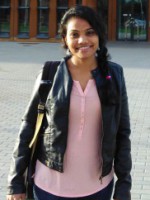abstract
Generally, emission quantum yield values of upconverting nanoparticles are not reported, despite its importance for characterizing the material's performance, because the measurements require quite expensive setups (a single photomultiplier operating in a broad spectral regions from the visible to the near-infrared) and laborious procedures (spectral mismatch correction when two photomultipliers are used). Here we describe the implementation of a simple and cost-effective quantum yield measurement setup using a commercial integrating sphere-based spectrometer operating in the visible spectral range and a power meter to determine the incident number of photons. First, we validate the experimental methodology using well-known down-shifting standard phosphors (sodium salicylate and perylene). Then, we use the developed setup in an illustrative example of upconverting nanoparticles, SrF2:Yb3-1-/ Er3+ (20/2%), to quantify their emission quantum yield values in powder (0.0057 +/- 0.0002 at 388 W cm(-2)) and water suspension (0.0028 +/- 0.0001 at 395 W cm(-2)). (C) 2017 Elsevier B.V. All rights reserved.
keywords
UP-CONVERSION NANOCRYSTALS; LUMINESCENCE EFFICIENCY; POWER DEPENDENCE; LANTHANIDE; EXCITATION; GRAPHENE; PHOSPHOR; CELLS
subject category
Optics
authors
Balabhadra, S; Debasu, ML; Brites, CDS; Ferreira, RAS; Carlos, LD
our authors
Projects
CICECO - Aveiro Institute of Materials (UID/CTM/50011/2013)
LUMINET - European Network on Luminescent Materials (LUMINET)
acknowledgements
Financial support of Fundacao para a Ciencia e a Tecnologia (FCT) (PTDC/CTM-NAN/4647/2014 and POCI-01-0145-FEDER-016687), EC Marie Curie Initial Training Network LUMINET (316906) and COST-CM1403 Action is acknowledged. This work was partially developed in the scope of the project CICECO - Aveiro Institute of Materials, POCI-01-0145-FEDER-007679 (Ref. FCT UID /CTM /50011/2013), financed by national funds through the FCT/MEC and when applicable co-financed by FEDER under the PT2020 Partnership Agreement. SB acknowledges Professor Marco Bettinelli from University of Verona, Italy, for his support during her LUMINET secondment. MLD (SFRH/BPD/93884/2013) and CDSB (SFRH/BPD/89003/2012) thank Fundacao para a Ciencia e Tecnologia (Portugal) for the post-doctoral grants.






